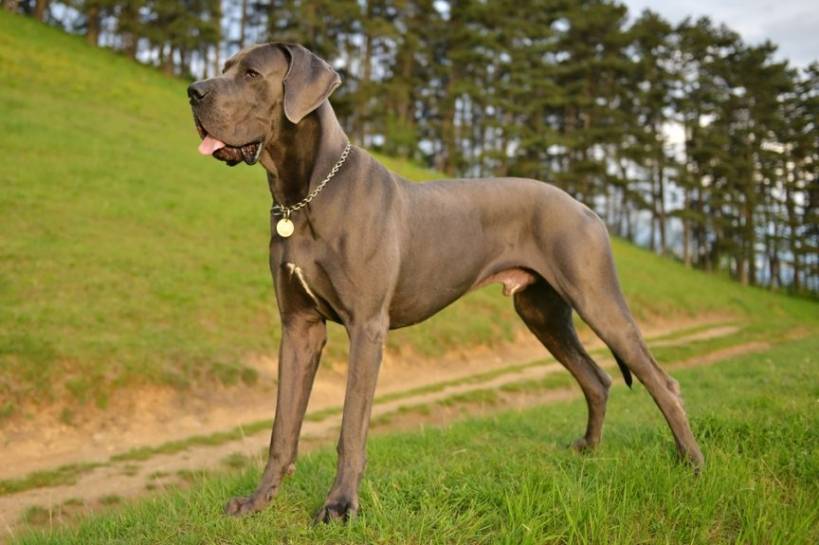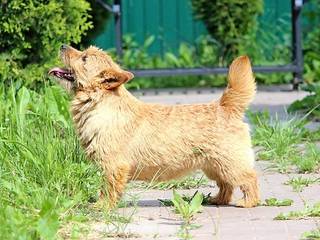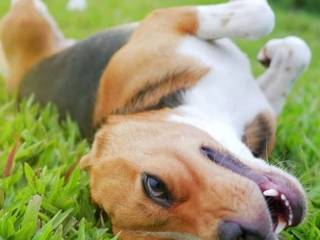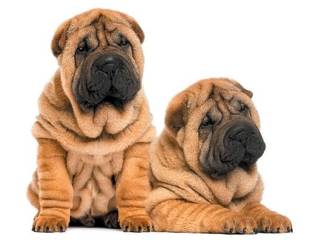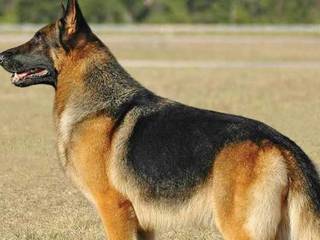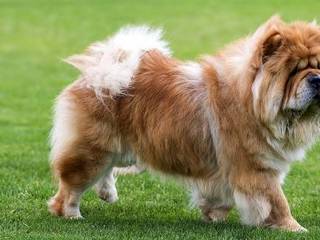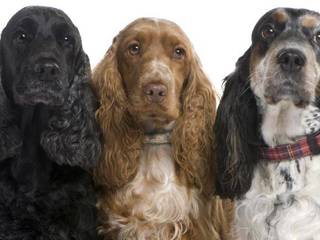Mastiffs are very popular in Europe. The material for the breeding served a Great Dane, which for many centuries was distributed in Denmark. The group brings together a mastiff like dogs is called Molossers, cultivating at different times of the formation of Denmark. Dogs were very large, had developed muscles, and great physical strength. These dogs were considered natural-born warriors, and often were used in gladiatorial combat. Dane is a sample of fighting dog of gladiators, which was used for baiting wild animals: wild boar, bears and bulls. By the end of the XIX century, they stopped to breed Danish dogs, and it slowly began to fade. Several puppies were brought to the adjacent land in the German Reich. The Germans began to cross Great Dane with similar dogs to mastiffs, which lived on the lands of the south. Originally, breed was called Ulm dogs, as breeding center was the German city of Ulm. Then, in 1871, after the proclamation of the German Empire, the Germans had the idea to create a national breed dog and Ulm dog, which was the progenitor of a Great Dane, became known as the Great Dane. Soon, the symbol of German unity became a Great Dane. Already in 1888 in Berlin, a club for breeding Great Danes was founded. Time passed, and the beginning of the new century, breeders have achieved many results to improve the breed, which has become the pride of the German nation. The Germans applied serious and painstaking efforts in breeding dogs; the breed was not like any Great Dane or Mastiff on the south. In the end, it came a completely new and improved breed of purely German dog.
Noble and fashionable salons and kennels of hunters were keeping the Great Danes. Beautiful anatomy of the body and the excellent working dog qualities made it universal. These properties have caused interest abroad and the breed quickly crossed the borders, spreading throughout Europe. However, the Great Danes have been significantly reduced due to the First World War and its aftermath, but the complete destruction followed. In Germany, Great Danes have been stored longer than in other countries, however, there they were left in a small amount that they needed to restore the breed. This prompted a person to make a lot of mistakes. There were experiments on the transformation of species. They made artificial cultivation using anabolic drugs. They began to give dogs anabolic to muscle growth and large size. Nevertheless, with stimulants were forgotten natural exercise, the dogs were not trained. The Germans had the idea to bring a dog that is a cross between a mastiff and a greyhound, with the preservation of their best qualities. The use of anabolic steroids crippled the internal organs of the breed, undermined the health and raised a question of the ability to reproduce. Experiments, carried out on German dogs looked ridiculous, because the Germans sought to make each new generation of dogs above a certain number of centimeters, and a couple of kilos heavier. That constant desire to improve further growth led to the fact that the dog became painful, and it had a lot of defects of the internal organs.
Today, the Great Dane seems quite satisfactory. This is an anatomically correct dog. It is very temperamental and mobile, perfectly fulfills its guard and service functions. However, the Great Dane has a very low life expectancy; dogs live only 10 years, in contrast to other dogs. The dog is prone to the nervousness and mild aggression. The big sizes require constant stability of the nervous system and the mandatory discipline, so in the cities the dog should be strictly educated. You cannot relax and forget there is a great gladiator, which will always be willing to go to war in front of you. Unbridled temper and uncontrolled aggression of the Dane can develop into a serious threat even to the owner. There is another extreme, which is often found in dogs. Mastiffs are too cowardly, it is considered degeneration. Such dogs in Germany were immediately excluded from the breeding and exported outside as the cowardly dog gives cowardly offspring.The keeping is difficult because they are very large and aggressive dogs. Dogs are more dangerous than large and medium-sized dogs, so their owners must be balanced and strong people. Walking the dog, its feeding and training should have a very serious approach. The height of a large dog is up to 80 cm, the lady-dog's is up to 73 cm; it weighs from 50 to 55 kg.
